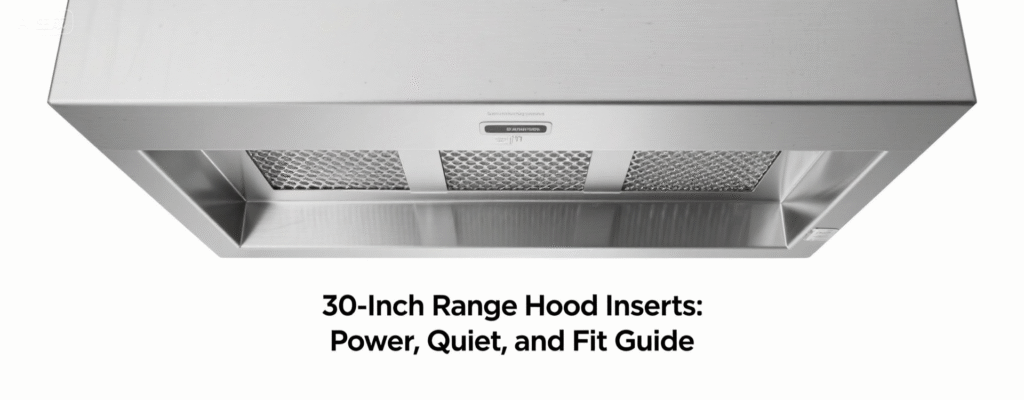Upgrading your kitchen’s ventilation doesn’t always require a full, bulky hood replacement. For a streamlined and powerful solution, many are turning to range hood inserts. This article will delve into the world of 30-inch models, guiding you through the critical specifications and installation considerations to ensure you select the perfect insert for a cleaner, more enjoyable cooking environment.
Unlocking Power and Quiet: Key Specifications for 30-Inch Inserts
When selecting a 30-inch range hood insert, performance is paramount, and this is measured by two key metrics: CFM and sones. CFM, or Cubic Feet per Minute, indicates the hood’s power to remove smoke, grease, and odors. For most home kitchens, a CFM between 400 and 900 is effective, with higher CFM ratings necessary for powerful cooktops or open-plan spaces. For instance, a model like the Tylza 30 900 CFM Under Cabinet Range Hood offers robust power suitable for serious cooking. However, power shouldn’t come at the cost of peace. The noise level, measured in sones, is equally crucial. Modern inserts achieve a quiet operation through advanced baffle filter designs and improved motor technology. Look for a model that balances a high CFM with a low sone rating (often between 2.5 and 6 on lower settings) for a kitchen that is both fresh and quiet.
Seamless Integration: Sizing and Installation Essentials
Beyond raw power, the success of your new ventilation system hinges on a perfect fit and proper setup. A 30 range hood insert is designed to fit within a standard 30-inch wide cabinet or custom hood enclosure. It is vital to confirm the exact cutout dimensions provided by the manufacturer, as a misstep here can lead to costly modifications. The installation process also involves planning for ductwork. While ductless (recirculating) kits are an option, a ducted system that vents to the outdoors is far more effective at removing heat and contaminants. The 30-inch insert you choose should align with your home’s existing ductwork or the feasibility of installing new ducts. Ensuring a tight, sealed connection from the insert to the external vent is critical for maximizing efficiency and preventing energy loss, a principle supported by building science standards like those from the Home Ventilating Institute (HVI), which has been certifying home ventilation products since 1955.
In summary, choosing the right 30-inch range hood insert is a strategic decision that enhances your kitchen’s functionality and air quality. By prioritizing a balance of high CFM and low noise (sones), and ensuring a precise fit with a properly planned ducted system, you can achieve a professional-grade result. Investing in a quality insert, such as a powerful 30-inch model, ultimately provides a cleaner, more comfortable, and efficient cooking space for years to come.
